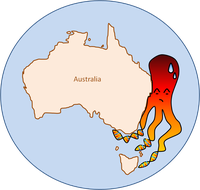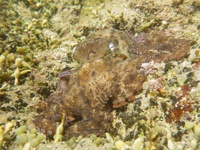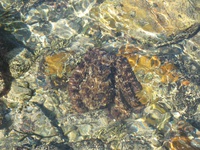Genetic implications of range shifts
Jorge Ramos and Jan Strugnell.
We’re moving south but are my ‘genes’ ready?
Anthropogenic climate change is resulting in warmer waters that are in turn altering the distribution and abundance of marine species. Although changes in distribution are being documented all over the world, there are large gaps in our understanding of the mechanisms underpinning those changes and the evolutionary consequences of such shifts.
In south eastern Australia, the East Australian Current is extending further south into Tasmanian waters and persisting for longer periods throughout each year resulting in warming of the Tasman Sea at 3–4 times the global average. Associated changes in biodiversity and the functioning of ecosystems are in turn impacting both biodiversity and fisheries. Consequently, there is increasing interest from scientists, resource managers, conservationists and people dependent on marine resources to understand how species will respond to water warming.
Global warming is a major stressor for many wild populations, especially those having characteristics that do not easily allow them to shifts to more suitable water temperatures when they find themselves in hot water. Range shifting species experience a series of events that impact on evolutionary processes and affect their ability to successfully expand their distribution. In this sense, diversity in their genetics is critical to maintain the potential of populations to deal with such stressors. Factors that affect their diversity includes the population size, the rate of reproductive exchange between individuals, the dispersal ability, the scale of space and time over which dispersal occurs and the presence of barriers to migration and reproduction. Such diversity varies depending on where population or subpopulations are located within the entire distribution of the species. For example, populations in the centre of the distribution are likely to have more genetic diversity due to gene flow from neighbouring populations that are better adapted to different conditions. Populations at the edge of the distribution that is shifting (or the ‘leading migrating front’) that receive genetic diversity from the centre of the distribution are likely to adapt to new conditions better through increased genetic diversity. However, populations at the trailing edge of the range that do not receive genetic diversity from better adapted populations may not adapt to new conditions. In the long term, if gene flow is low from the historical centre of the distribution to the edge of the distribution, the component of the population at the edge of the distribution might become an isolated population with particular biological characteristics.
Therefore, understanding of the level of connectivity within one or more populations along their distribution is fundamental to understanding the genetic and evolutionary consequences of range extensions. This knowledge would help prevent localized extinction and conserve the genetic diversity within and between genetically distinct populations that are the target of the fishery.














